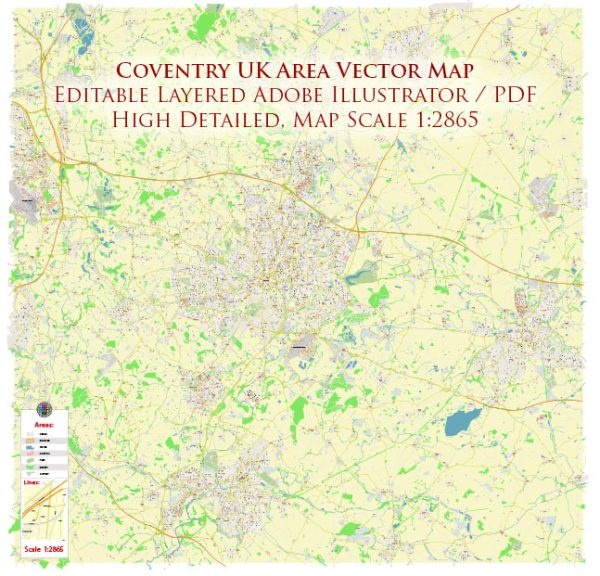Coventry is a historic city located in the West Midlands region of England, United Kingdom. Its history is rich and diverse, spanning over a thousand years. Here’s a brief overview of Coventry’s historical development:
- Early History: Coventry’s history dates back to at least the Roman period, with evidence of a settlement in the area. However, it was during the early medieval period that Coventry began to flourish as a market town.
- Medieval Coventry: Coventry became a significant center for trade and industry in the Middle Ages. It received its city charter in 1345. During this period, the city’s economy thrived due to the woolen cloth trade and various crafts. The Coventry Guild of Weavers, established in the 14th century, played a crucial role in the city’s prosperity.
- St. Mary’s Guildhall: St. Mary’s Guildhall, dating back to the 14th century, is one of Coventry’s most iconic historic buildings. It has served various purposes over the centuries, including as a place for feasts, meetings, and civic ceremonies.
- The English Civil War: Coventry played a role in the English Civil War (1642-1651) when it supported the Parliamentarians against the Royalists. The city was fortified and besieged, but it ultimately remained under Parliamentarian control.
- Industrial Revolution: Coventry experienced significant industrial growth during the 18th and 19th centuries, particularly in the textile, watchmaking, and bicycle industries. The city’s bicycle production led to the nickname “the city of a thousand trades.”
- World War II: Coventry is sadly renowned for the devastating bombing raids it endured during World War II. The city suffered heavy bombing in November 1940, leading to the destruction of much of its historic architecture and industrial infrastructure, including the famous Coventry Cathedral.
- Post-War Rebuilding: After World War II, Coventry undertook a massive rebuilding effort. The reconstruction of Coventry Cathedral, designed by Sir Basil Spence, is an iconic symbol of the city’s resilience and reconciliation.
- Modern Coventry: Coventry continued to evolve in the post-war period. It became known for its contributions to the automotive industry, with many automobile manufacturers establishing factories in the area. The city was also granted city status in 1977.
- Cultural Significance: Coventry has a rich cultural heritage, with numerous museums, galleries, and theaters. The Belgrade Theatre is one of the city’s prominent cultural institutions. Coventry also hosts various annual events and festivals, including the Godiva Festival and Coventry Motofest.
- UNESCO City of Peace and Reconciliation: In 1981, Coventry was recognized as a City of Peace and Reconciliation by UNESCO in honor of its post-war efforts to promote peace and reconciliation. This designation reflects the city’s commitment to promoting unity and understanding among communities.
Today, Coventry is a modern and diverse city known for its contributions to technology, education, and culture. It remains a symbol of resilience and renewal, having overcome the destruction of World War II and embracing its rich history as it looks toward the future.


 Author: Kirill Shrayber, Ph.D.
Author: Kirill Shrayber, Ph.D.